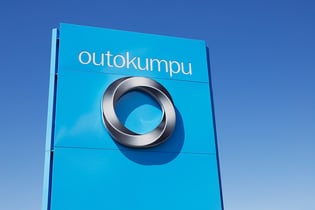Stainless MMI: Demand Woes Plague Stainless Market, U.S. Prices Flat
The Stainless Monthly Metals Index (MMI) moved sideways, sliding a modest 0.54% from October to November.

Stainless Demand Softens from Q2
The global stainless steel market showed zero signs of recovery in Q3. Demand conditions remain weak, with no expectation of a turnaround in the short term. Outokumpu’s recent quarterly financial report exemplified the soft market conditions, as the producer saw a decline in shipments across both Europe and the Americas.
Europe
European conditions appeared particularly weak, with Outokumpu’s shipments falling 12% from Q2 and over 10% from Q3 2024. This comes as low-priced Asian imports helped drag realized prices “significantly” lower.
Meanwhile, Europe is working to address such price pressures, which will help raise the price floor. In addition to the Carbon Border Adjustment Mechanism (CBAM), the EU proposed raising tariffs and lowering quotas on steel imports. If approved by the European Parliament and member states, the measures would take effect by mid-2026. This would leave a window of opportunity for sourcing adjustments and for European buyers looking to engage in strategic restocking efforts.

While trade barriers aim to address import threats, soft demand has forced Outokumpu to restructure, resulting in layoffs at certain European operations. The CFO noted further layoffs remain possible if market conditions do not improve. However, European producers could see relief if the U.S. agrees to a quota arrangement with the EU. While the U.S. has thus far held back on any such agreement, organizations are encouraged to leverage contingency plans when contracting in case trade policy shifts.
United States
Compared to Europe, the U.S. market appeared more stable, although it still saw a 6% quarter-over-quarter decline in shipments. Despite the quarterly dip, Q3’s performance reflected a more than 5% increase in shipments from the same period of 2024.
It is worth noting that the year-over-year rise does not necessarily indicate a rebound, as market conditions remain weak across North America. Not only was 2024 a soft base year to compare against, but according to data from the American Iron and Steel Institute, apparent consumption of cold-rolled flat products dropped 4% from Q3 2024.

Outokumpu's performance in the Americas can instead be attributed to tariffs, which insulated the market from imports. As a result, Outokumpu gained a greater share of overall demand and noted an increase in realized prices in the region despite slower conditions compared to Q2.
Meanwhile, U.S. mill price increases announced over the summer are now fully reflected in current base prices. Most shipments from Outokumpu and NAS are still based on contracted prices established prior to the price hikes. However, U.S. mills have been able to achieve higher prices for spot purchases and new business for organizations that shifted toward domestic sources and away from imports.
NAS to Delay Ghent Start
While the lower–import environment will offer ongoing support to prices, slow demand conditions remain a headwind. For example, sources report that NAS has opted to delay the opening of its Ghent facility after initially planning for it to begin production at the end of 2025.
The expansion project will increase NAS’ total capacity by 200,000 tons per year and offer a new cold rolling mill, temper mill, roll grinders and an extensive upgrade of its annealing and pickling lines.

Market sources were skeptical that the U.S. market was prepared to support the introduction of new capacity without eroding prices, particularly as Q4 experiences a seasonal slowdown. Increased output would have essentially forced NAS to discount prices to attract new orders, as the U.S. manufacturing sector remains in contraction.
The Ghent delay suggests that NAS is focused on maintaining current base prices, likely so it can slowly introduce new capacity as demand conditions warrant. 2026 is slated to see several new manufacturing projects related to data centers and industries that support them, some of which will benefit stainless. However, it remains unclear to what degree those projects will compensate for the lackluster conditions in other sectors.
Nickel Prices Ignore Base Metal Optimism
The nickel market remains quiet, having diverged from the larger base metal category. October witnessed notable breakouts in aluminum, copper, zinc and tin prices, while lead and nickel trended sideways. In the case of nickel prices, they even tracked a modest decrease.
While supply concerns and investor optimism have fueled other markets, both lead and nickel appear well-supplied, with few signs of the balance shifting in the near term. This suggests that the nickel market has found a comfortable bottom for now. However, with LME inventory stocks still in growth and trending at an almost 4-year high, the current price bottom appears fragile absent more meaningful global capacity cuts.
Biggest Nickel and Stainless Steel Price Moves
- Chinese ferrochrome prices maintained an upside bias, although the pace of increases continues to slow. Prices moved sideways with a modest 1.35% rise to $1,289 per metric ton as of November 1.
- The Allegheny Ludlum surcharge for 304/304L witnessed a slight 0.38% increase to $0.90 per pound.
- Meanwhile, Indian primary nickel prices slipped 0.46% to $15.15 per kilogram.
- The Allegheny Ludlum surcharge dropped 2.39% to $1.50 per pound.
- Chinese ferromolybdenum prices retreated 3.03% to $37,351 per metric ton.